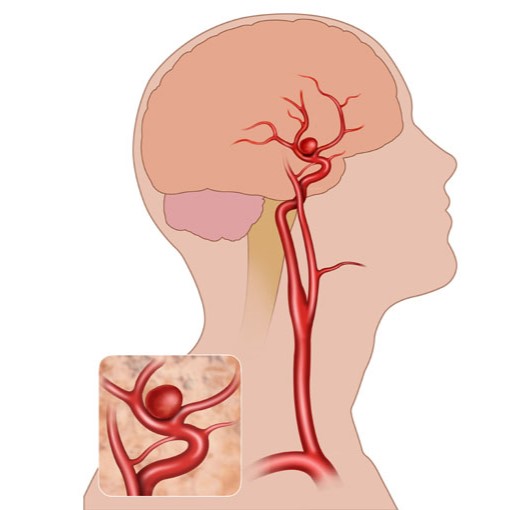Aneurysm Coiling
- Home
- Aneurysm Coiling
In Aneurysm Coiling, A brain aneurysm is a balloon-like swelling that results from a weakness in the wall of one of the blood vessels supplying blood to the brain. There is a risk that the aneurysm will rupture (burst suddenly) and cause a haemorrhage (bleed).
In the 1990s, aneurysm coiling was introduced as a way of treating ruptured and unruptured aneurysms without the need for a craniotomy (an operation to open the head to expose the brain). Coiling involves approaching the aneurysm from inside the blood vessel, avoiding the need to open the skull.
The aneurysm coiling procedure is similar to an angiogram (an X-ray test to take pictures of the blood vessels) and involves a very small tube being fed up to the brain via blood vessels from the groin. When the catheter is placed correctly, the doctor injects the contrast agent while x-ray pictures are taken. A second smaller catheter, about the size of a string of spaghetti, is advanced through the first catheter.

This microcatheter travels through the arteries and into the aneurysm itself. Next, small platinum coils are advanced through the catheter until they emerge inside the aneurysm, thereby reducing or blocking the flow of blood into the aneurysm. The coils are twice the width of a human hair, and can vary in length. The number of coils needed depends on the size of the aneurysm. The largest coil is inserted first and then smaller coils are inserted until the aneurysm is filled. Some aneurysms with a wide neck or unusual shape may also require a stent to help hold the coils in place.
Case :
62/Y Female with history of hypertension complained of sudden onset headache- WORST OF HEADACHE of her life. On CT Brain and Angiography, showed Subarachnoid Hemorrhage with an A Comm Aneurysm.
Intracranial coiling of the pseudoaneurysm done. No neurodeficit post coiling.

